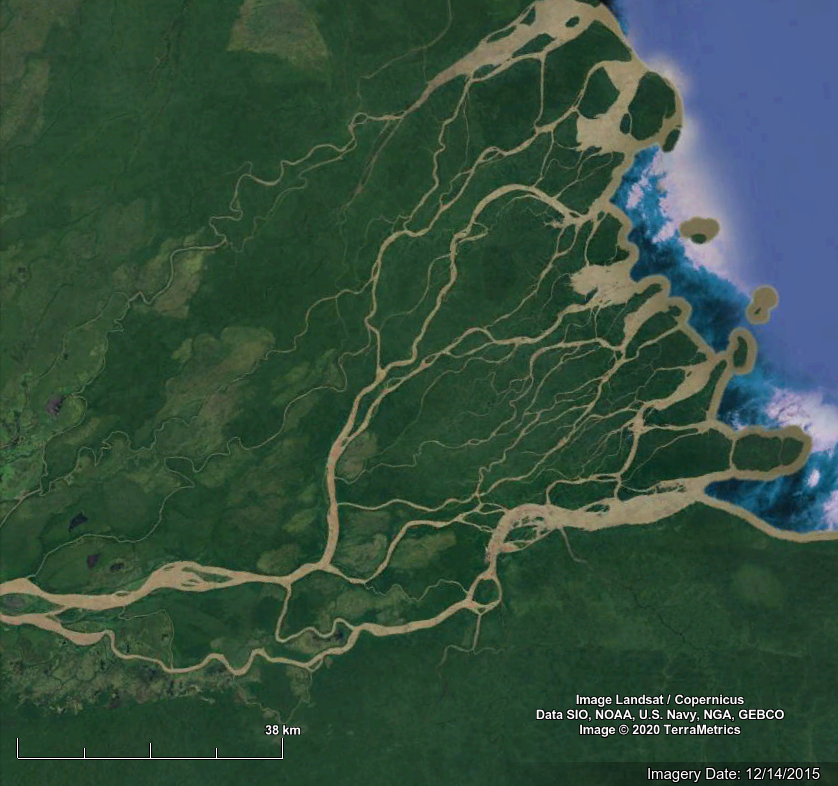Base level
Base level is the lowest elevation to which a river flows, and dictates the lowest elevation to which it can erode.
Learning Goals
- Know that base level is the elevation to which a river flows. The river cannot erode more than a channel depth below its base level.
- Think about how changes in base level might impact a river.
What is base level?
Base level is the elevation of the stream, lake, basin, or ocean into which a river flows. Erosion cannot proceed below this base level.
- A mainstem river sets local base level for its tributary.
- A lake or enclosed basin sets base level for the river flowing into it.
- Sea level sets the ultimate base level for all rivers that enter the ocean.
 Examples of base level from SEPM.
Examples of base level from SEPM.
How does base-level change impact rivers?
Everything is relative
Base-level fall and rise are all about the relative elevations of the channel with respect to its ultimate outlet.
- Tectonic uplift of a block causes relative base-level fall at its outlet.
- Tectonic (or otherwise-caused) subsidence of a block causes relative base-level rise.
(Subsidence can occur for reasons including the compaction of sediments, water/hydrocarbon extraction, thermal contraction of the underlying crust. Uplift typically occurs just via tectonic drivers – but there is no fundamental reason that it should be limited to just this.)
Base-level fall
Base-level fall will steepen the mouth of a river, causing it to incise. We often consider base-level fall to be a vertical drop in the elevation of the river outlet.
Note, however, that this can be complicated in real-world situations by the fact that the oceans and lakes rarely have purely vertical boundaries: a drop in sea level will most commonly change the lateral position of a river outlet as well as its vertical position. If the slope of the continental shelf is the same as the slope of the river, the channel might simply extend itself towards the ocean without incising into its bed at all!
Base-level rise
Base-level rise causes the river to aggrade. This will induce channels to fill in and likely cause them to avulse to new locations. If the avulsion is partial, it can result in the river forming an anastomose planform, such as that of the Orinoco River delta in Venezuela, below.
 Image: Google Earth; see precise references in the image itself.
Image: Google Earth; see precise references in the image itself.

This work is licensed under a Creative Commons Attribution-ShareAlike 4.0 International License.
